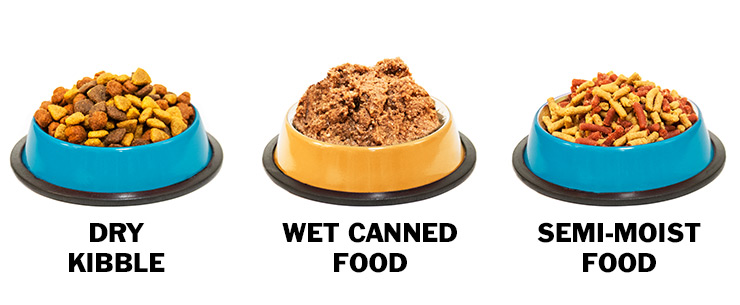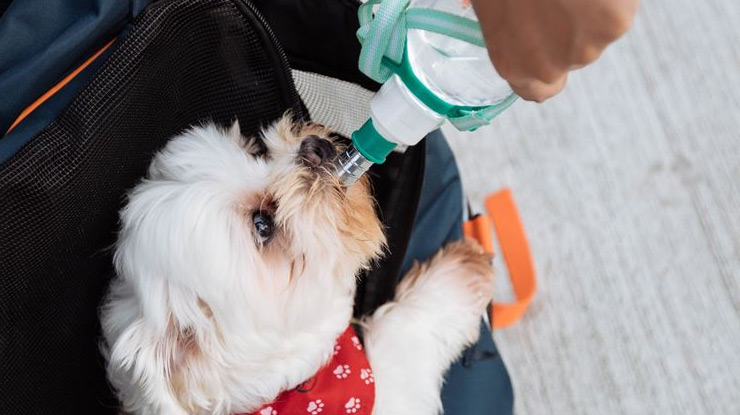
Food and Water Essentials for Your Pup
The new year is here, and new year’s resolutions are in full swing. Many people are changing up their diets, working out more, reading more books, or trying out new hobbies. New year’s resolutions are different for everyone. Maybe you are focusing on nutrition this year, so why not include your dog in your changes? You want to feed your puppy the best possible food at the right portion size, right? Sometimes determining the correct food and portion size isn’t always easy. Every puppy is different and has different needs.
Getting Started
Some puppies, especially those belonging to large breeds, require larger servings for health development. It is typically recommended that young dogs eat puppy food for at least one year, but larger breeds usually require puppy food for longer than a year because of their specific growth needs. On the flip side, smaller breeds may be able to switch to normal dog food sooner than the recommended period. The best thing to do is contact your vet if you have concerns about portion size and/or transitioning from puppy food to normal dog food.
Feeding your puppy the same food fed by his breeder is the simplest way to avoid tummy issues that may arise from switching dog food brands. However, if you want to use a different puppy food, the process will be slightly more complicated. Switching the food without giving your puppy’s digestive system time to adjust can make your puppy sick, and no one wants a sick puppy! Introducing the new food slowly should give your puppy time to adjust without any trouble.
Food Types
The science behind dog food has been refined to meet dogs' needs in all stages of life. It’s generally a bad idea to feed your dog table scraps because the nutrition they need just isn’t found in our human food. Some of our everyday food can even be harmful to dogs. Puppies should receive their nutrition from food made specifically for them. This food provides the best balance of calories and nutrients for their health. There are different options on the market when it comes to dog food: dry kibble, wet canned food, and semi-moist food. So, which one is the best option? Well, each food comes with its own pros and cons.

Dry Kibble
Kibble tends to cost less than the other two options, but that doesn’t make it the weakest option. In fact, kibble is believed to be a better pick for maintaining healthier teeth and fighting off tartar buildup because of its crunchy texture. Additionally, kibble doesn’t need to be refrigerated, so it has a longer shelf life. Unfortunately, some makers of kibble cut costs by using poor ingredients. Check the label before buying. A specific type of meat, such as chicken or lamb, should be at the top of the ingredient list. If this is not the case and says, “non-specific meat,” then stay away.
Wet Canned Food
Canned food is usually more expensive than kibble, but many dogs prefer the taste of canned food to its dry counterpart. Canned food has a long shelf-life too, but it must be used or refrigerated after opening. Canned food also doesn’t have a crunchy texture, so dental hygiene will need to be taken care of with brushing. Brushing is a must. Canned food also contains a significant amount of water, so it may lack the nutritional content a growing puppy needs.
Semi-Moist Food
Semi-moist food has a few beneficial qualities, but its drawbacks tend to outweigh the positives. It comes in packets, so portion sizes are already determined. It is also softer than kibble and does not need to be refrigerated. Unfortunately, semi-moist food is generally considered the least healthy type of dog food. The salt and sugar content tends to be higher than wet canned food and considerably higher than most kibble. The soft texture causes food to stick to the teeth, which can potentially lead to periodontal disease.

Water
Food is important, but a thirsty dog faces a more immediate threat than a hungry dog. The consequences of thirst develop more rapidly. Growing puppies should have constant access to fresh, clean water. Refilling the water dish each day is the best way to prevent harmful bacteria from growing inside. It’s also best to wash your water dish at least once a week. Puppies should also never be allowed to drink out of a dirty water source, such as puddles, ponds, or ditches. If you are trying to determine if a water source is safe, ask yourself if you would drink from it. If not, then it’s not safe for your puppy, either.
Conclusion
Picking your puppy’s food is a vital part of his development. Do your research on brands, and get your vet involved when determining portion size. Your puppy is growing and needs nutrition and calories to ensure he grows up to become the best dog he can be. You can find even more information on nutrition and other topics in our book, Puppies 101: A Complete Guide to Life with Your Pup.










